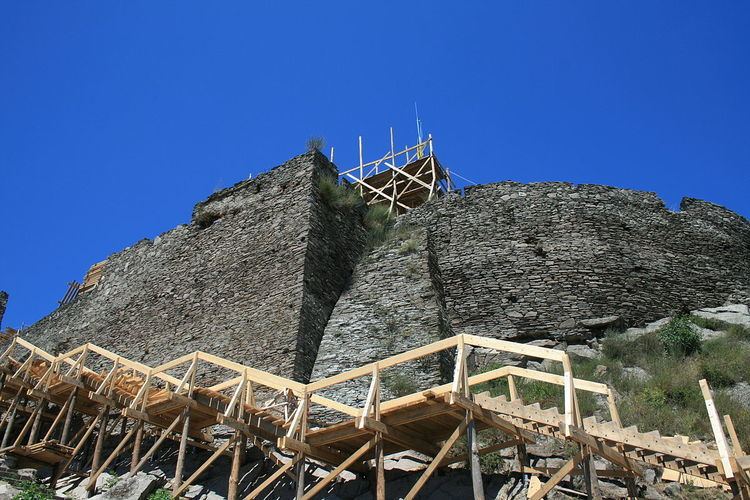Type Fortress Built after 1242 Phone +40 31 417 8522 | Open tothe public yes In use 1269–1848 | |
 | ||
Condition ruins in reconstruction Events Peter I Csák, Palatine of Hungary defeated the Cumans,Ferenc Dávid died in the fortress's prison,Horea, Cloșca and Crișan's revolt besieged (unsuccessfully) the fortress Hours Open today · 8:15AM–8PMWednesday8:15AM–8PMThursday8:15AM–8PMFriday8:15AM–8PMSaturday8:15AM–8PMSunday8:15AM–8PMMonday8:15AM–8PMTuesday8:15AM–8PM Similar Magna Curia, Corvin Castle, Sarmizegetusa Regia, Aqualand Deva, Museum of Dacian and Roman C | ||
The fortress of deva by zet art
The Fortress of Deva (Romanian: Cetatea Devei, Hungarian: Déva vára) is a fortress located in the city of Deva, Hunedoara County, Romania, on top of a volcanic hill.
Contents
The fortress of deva
Position
The fortress is located atop a volcano in the Poiana Ruscă Mountain Range within the Western Carpathian Mountains of Romania. From the foot of the hill, the city of Deva spreads out, beginning with Magna Curia and the public park. Nearby are the lower funicular station, which tourists use to reach the fortress, and most of the buildings of the administrative institutions of the city: the Court House, the Prefecture, the County Hall, the Finance Administration, the old police headquarters, the City Hall and two of the oldest schools in Deva: the Decebal National College and the Pedagogic Lyceum.
History
The first evidence of the medieval Deva Fortress dates back to the second half of the 13th century; in 1269, Stephen V, King of Hungary and Duke of Transylvania, mentioned "the royal castle of Deva" in a privilege-grant for the Count Chyl of Kelling (Romanian: comitele Chyl din Câlnic).
The first records regarding a military operation involving the fortress dates from 1273. Under its walls, the Cumans were defeated by Peter I Csák, Palatine of Hungary (Latin: Magister Pertrus de genere Chak), who was rewarded for his victory by Ladislaus IV, King of Hungary. In his letter, Ladislaus IV mentioned the facts with the words: sub castro Dewa contra Cumanorum exercitur viriliter dimicavit.
At the end of the 13th century, the Deva Fortress was in the property of Ladislaus Kán, Voivode of Transylvania, who organized a court besides the military garrison.
The Fortress of Deva is central to the Hungarian folk tale The Wife of Clement, the Mason.
